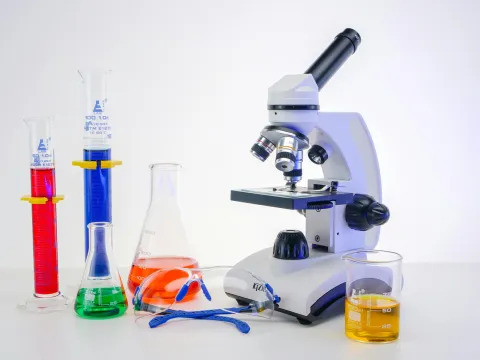Active banners: 0 Visible banners: 0
Heating It Up: The Chemistry of the Greenhouse Effect
Provided by: King's Centre for Visualization in Science |Published on: May 20, 2021
Graphs/Tables
9101112
Synopsis
- In this self-paced lesson, students will learn about the chemistry of the greenhouse effect.
- The lesson includes information about the relationship between temperature and energy in the Earth's atmosphere, properties of gases, absorption and emission of radiation, atmospheric molecular interactions, lapse rate, Earth's radiative energy balance, and the difference between greenhouse gases.

Subjects: Chemistry, Physics, Earth and Space Sciences
Authors: King's Centre for Visualization in Science
Region: Global
Languages: English
Teaching Materials
Positives
- This lesson uses text, visualizations, and checkpoints for understanding.
- The lesson provides comprehensive information on the greenhouse effect.
Additional Prerequisites
- Students should have a basic understanding of chemistry and physics concepts such as thermal energy, covalent bonds, electronegativity, electromagnetic spectrum, and wavelengths.
- Some students may be unfamiliar with CFCs (chlorofluorocarbons).
- This is part 3 of 9 in Explaining Climate Change, a series of lessons from The King's Centre for Visualization in Science.
Differentiation
- This is quite a technical and dense lesson, so teachers should pay attention to the pace at which they assign the six sections. Teachers may want to assign one key idea section at a time and check for understanding before proceeding to the next one.
- The reading level for these slides is upper high school to college-level, so teachers may want to employ reading scaffolds, such as graphic organizers, for students.
- Teachers may want to check for the students' understanding of chemistry concepts first and then support their scientific vocabulary acquisition for new terms such as electrostatic potential, diatomic molecules, infrared spectrometry, etc.
Scientist Notes
Teaching Tips
Standards
Resource Type and Format
About the Partner Provider

King's Centre for Visualization in Science
The King's Centre for Visualization in Science is a research center committed to improving the global public understanding of science through research and the creation and dissemination of peer-reviewed interactive electronic learning tools to see and understand science.
All resources can be used for your educational purposes with proper attribution to the content provider.



